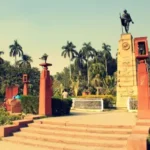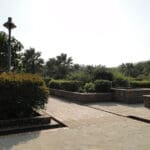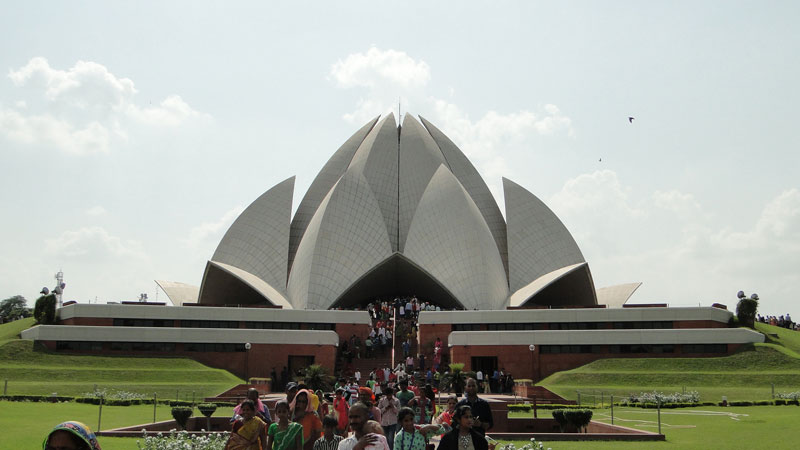Welcome to Lodhi Gardens – an urban oasis nestled in the heart of Delhi, India. In this comprehensive guide, we’ll explore the historical significance, architectural marvels, and practical tips for visiting this enchanting green haven. If you’re planning a trip to Delhi or simply want to learn more about this hidden gem, read on to discover the wonders of Lodhi Gardens.
A Glimpse into History
The Legacy of the Lodhi Dynasty
Lodhi Gardens, officially known as the “Lodhi Gardens Complex,” stands as a testament to Delhi’s rich historical heritage. The park gets its name from the Lodhi Dynasty, which ruled over Delhi during the 15th century. The gardens were commissioned by Sultan Sikandar Lodhi in the 15th century, making them an architectural marvel from a bygone era.
Architectural Splendors
One of the most striking features of Lodhi Gardens is its collection of ancient tombs and monuments. As you explore the park, you’ll encounter some remarkable structures, including:
1. Sikandar Lodi’s Tomb
- Built in 1517, this tomb is the final resting place of Sultan Sikandar Lodhi.
- The structure is characterized by its octagonal design and beautiful arches.
- It’s a serene spot for history enthusiasts and architecture aficionados.
2. Mohammed Shah’s Tomb
- Constructed in 1444, this tomb is a fine example of Indo-Islamic architecture.
- The tomb’s main attraction is its unique octagonal shape, an architectural rarity during its time.
3. Shisha Gumbad
- This imposing structure is adorned with intricate tile work and stands as a testament to the artistic prowess of its time.
Natural Beauty and Biodiversity
Lodhi Gardens isn’t just about history; it’s a vibrant hub of biodiversity within Delhi. The park spans 90 acres and is home to a variety of plant species, making it a haven for nature enthusiasts and birdwatchers. As you stroll along the well-maintained pathways, you’ll encounter ancient trees, flowering plants, and even a serene lake.
Birdwatcher’s Paradise
Birdwatchers will be delighted to spot numerous avian species in the gardens. Keep an eye out for peacocks, kingfishers, and parakeets that call this green oasis their home. The symphony of bird songs adds a magical touch to your visit.
Practical Tips for Visitors
Timings and Entry
Lodhi Gardens is open to visitors from dawn to dusk, ensuring you have ample time to explore its beauty. The best times to visit are early morning and late afternoon when the weather is pleasant.
Photography
Photography enthusiasts will find plenty of opportunities to capture the park’s beauty. Remember to be respectful of the historical monuments and fellow visitors while taking photographs.
Picnics and Relaxation
The park offers a tranquil environment perfect for picnics and relaxation. Pack a picnic basket and enjoy a meal amidst the lush greenery. Don’t forget to bring a mat or blanket for a comfortable picnic experience.
Yoga and Meditation
Lodhi Gardens provides a serene setting for yoga and meditation. Many visitors come here to find inner peace and practice mindfulness amidst the soothing natural surroundings.
Frequently Asked Questions
1. Is there an entry fee for Lodhi Gardens?
- No, entry to Lodhi Gardens is free for all visitors.
2. Are guided tours available?
- While there are no official guided tours, you can hire local guides at the entrance who can provide historical insights and interesting facts about the park.
3. Can I bring my pet to Lodhi Gardens?
- Yes, you can bring your pet to the park, but make sure to clean up after them and keep them on a leash.
4. Are there any nearby attractions?
- Yes, nearby attractions include Humayun’s Tomb and India Gate, both of which are worth exploring during your visit to Delhi.
Conclusion
Lodhi Gardens stands as a unique blend of history, architecture, and nature, making it a must-visit destination in Delhi. Whether you’re a history enthusiast, nature lover, or simply seeking a serene escape from the city’s hustle and bustle, Lodhi Gardens offers something for everyone. Plan your visit to this enchanting oasis and immerse yourself in the rich tapestry of Delhi’s past and present.








